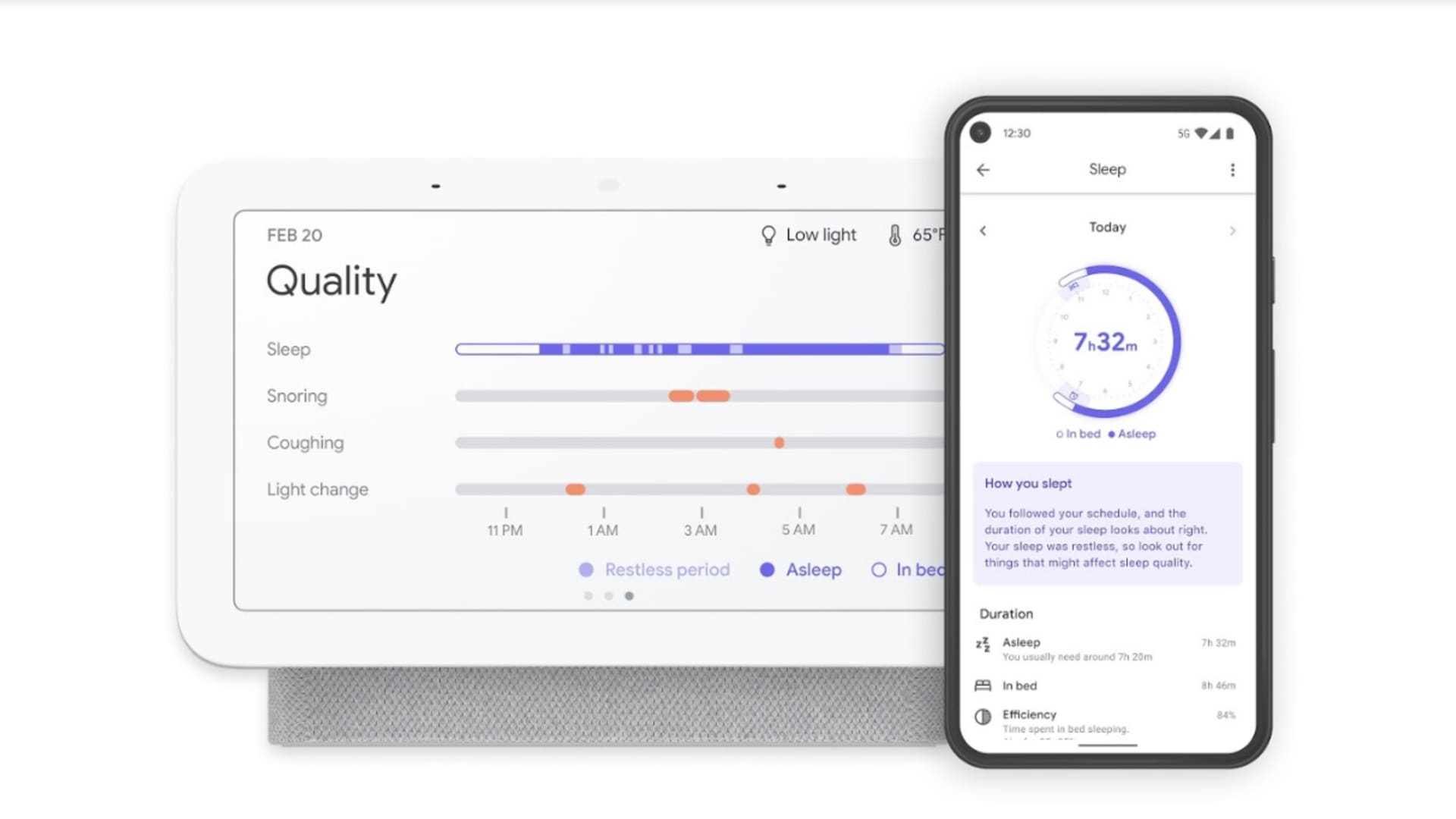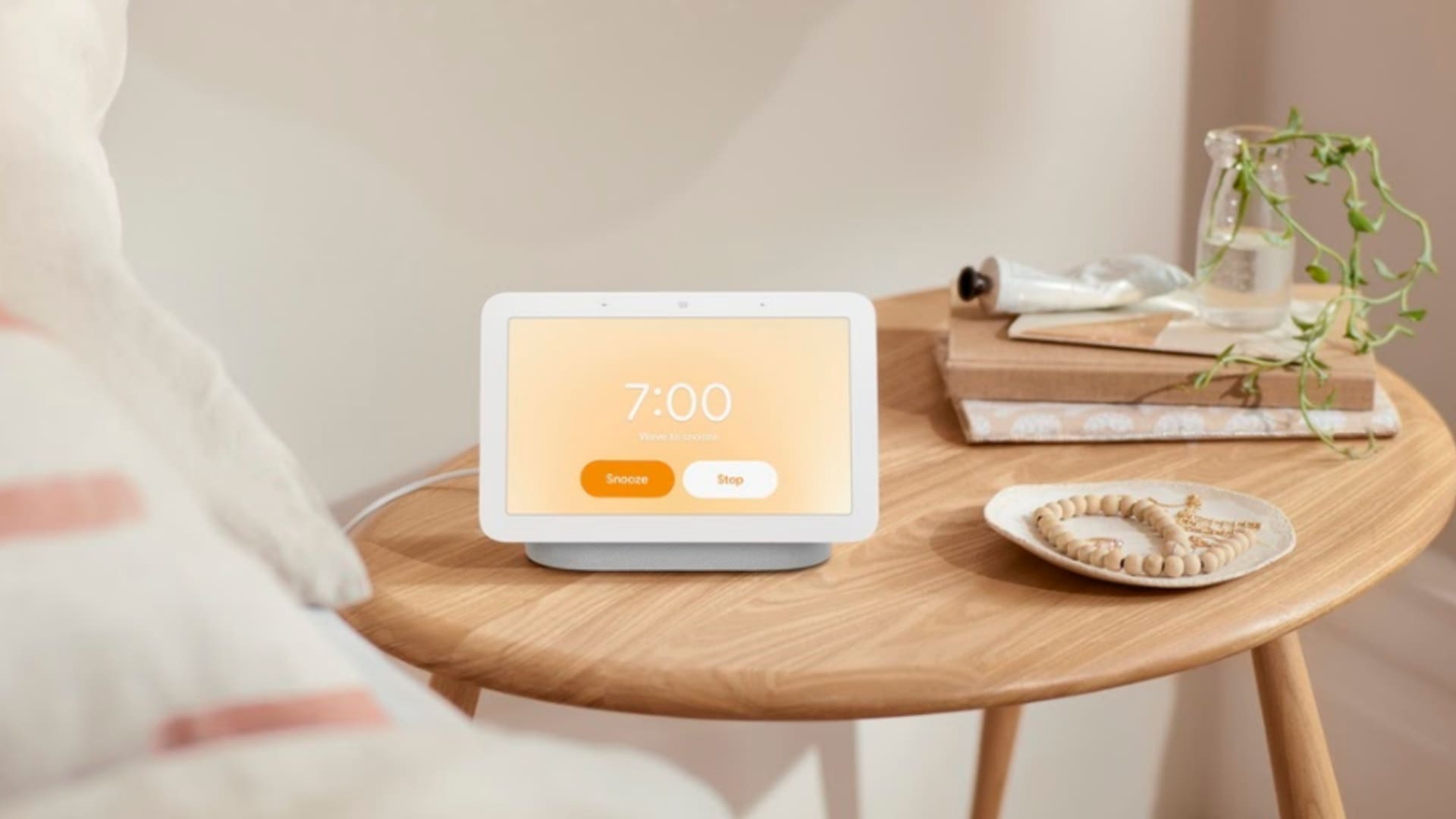
- Google on Tuesday unveiled the second-generation Nest Hub, a smart display and speaker that can track your sleep using a built-in radar sensor.
- The second-generation Nest Hub launches on March 30 for $99 but customers can order it beginning Tuesday.
- Google said it can measure micromovements, like your chest moving while breathing, to determine when you're sleeping.
Google on Tuesday unveiled the second-generation Nest Hub, a smart display and speaker that can track your sleep using a built-in radar sensor. It launches on March 30 for $99 but customers can order it beginning Tuesday.
This is the latest way Google is trying to make its smart home hub stand out from similar devices sold by Amazon and Facebook, and it's the first to offer sleep tracking.
The second-generation Nest Hub looks similar to the first model, which first launched in 2018. It has a 7-inch screen that you can use to watch streaming video services, check the weather, get alerts, turn on the lights and more. The newer model also has better speakers that offer 50% more bass than the first model.
We're making it easier for you to find stories that matter with our new newsletter — The 4Front. Sign up here and get news that is important for you to your inbox.
But the real new trick is that radar sensor.

Users can set the new Nest Hub near where they sleep, like on a bedside table, and it will guide them through a setup process for "Sleep Sensing," which helps line the radar up with where you sleep in bed. Google said it can measure micromovements, like your chest moving while breathing, to determine when you're sleeping. Microphones can determine if you're snoring or coughing, and other built-in sensors can determine the room's temperature and the brightness of lights. It takes all of this information and tells you how well you slept and can then make recommendations, like to set a reminder to go to bed at a certain time to improve consistency, or to try to meditate with a wind-down routine before bed.

While it might prove useful, it seems like Google is trying to slap the radar sensor into any product it can think of. It was developed as part of Project Soli, which was first introduced in 2015. Soli made its debut in the Pixel 4 phone, which let you skip songs by waving your hand over the screen, but was removed in the Pixel 5. It has since been introduced in a new model of the Nest Thermostat, where it's used to see if you're near the thermometer.
The new Nest Hub doesn't have a camera, so it can't see what you're doing in bed. And Google showed CNBC a sample of the spectrogram that the radar sensor sees — it looks like a bunch of jumbled lines. Still, people may be worried about a device near their bed that knows when they're moving or sleeping. Here's an example of what the radar sees:

Google said all of the radar and audio data is analyzed on the device and isn't sent to Google. But, the information on how well you slept is uploaded to the cloud if you want it to sync to Google Fit, the company's centralized health app that pulls data from other devices like phones and smartwatches. Google said that after you sleep, you can delete your sleep report for the night. And you can delete all of the data at any time.
Sleep Sensing is free for the next year. Google said it hasn't decided if it will charge for it yet.

Google recently acquired Fitbit, which also offers sleep tracking through its wearables. The company said this product is for people who don't wear sleep trackers to bed, but didn't say whether or not this option is more accurate than the wrist-based sensors.
Money Report
The radar can be used for other things, too. You can raise your hand to pause music, or raise your hand to snooze an alarm, for example. That's similar to the functionality built into the Google Home Hub Max, which has a camera to enable those interactions. But, otherwise, this product is mainly for people who don't already own the first-generation model or who really want the sleep tracking.






